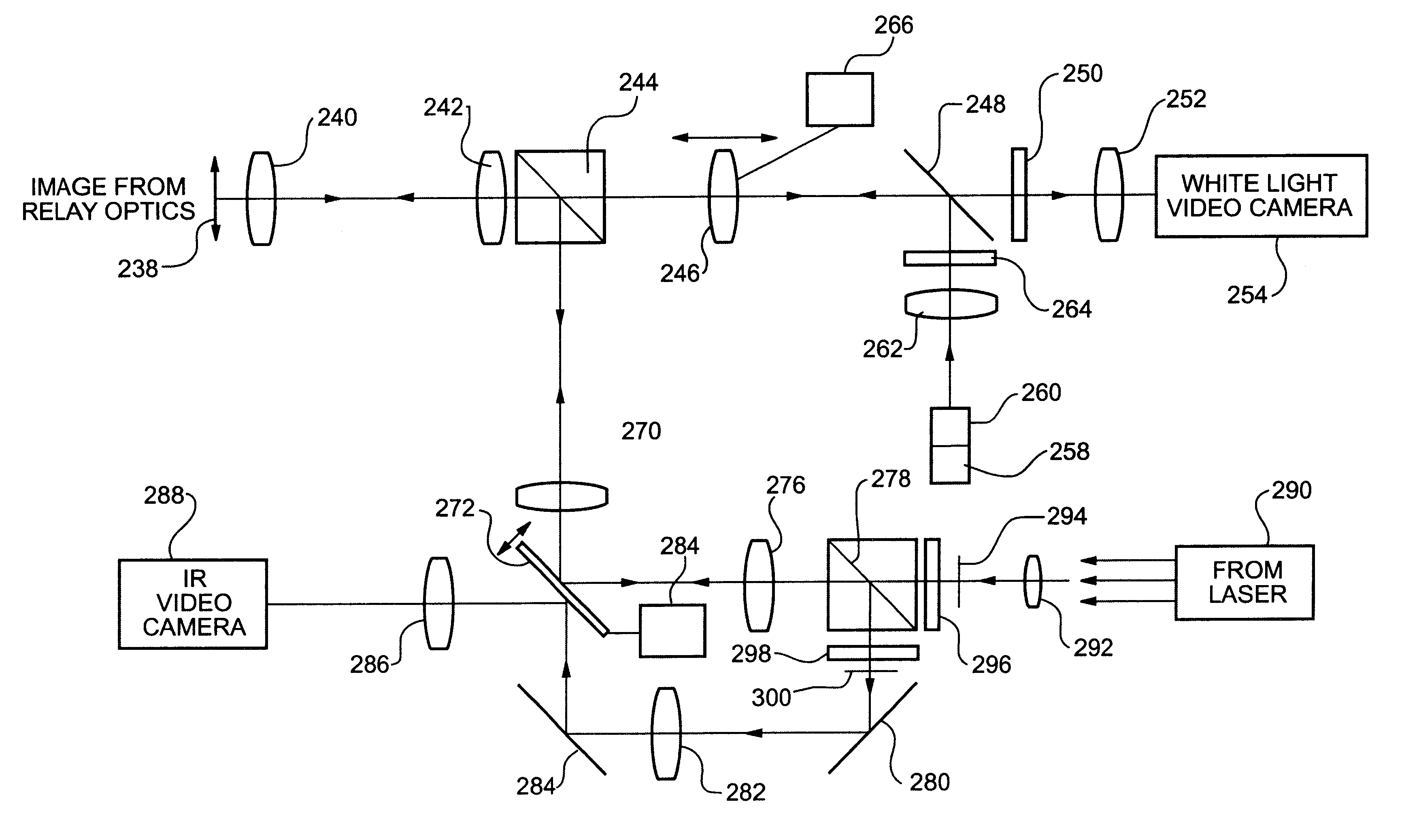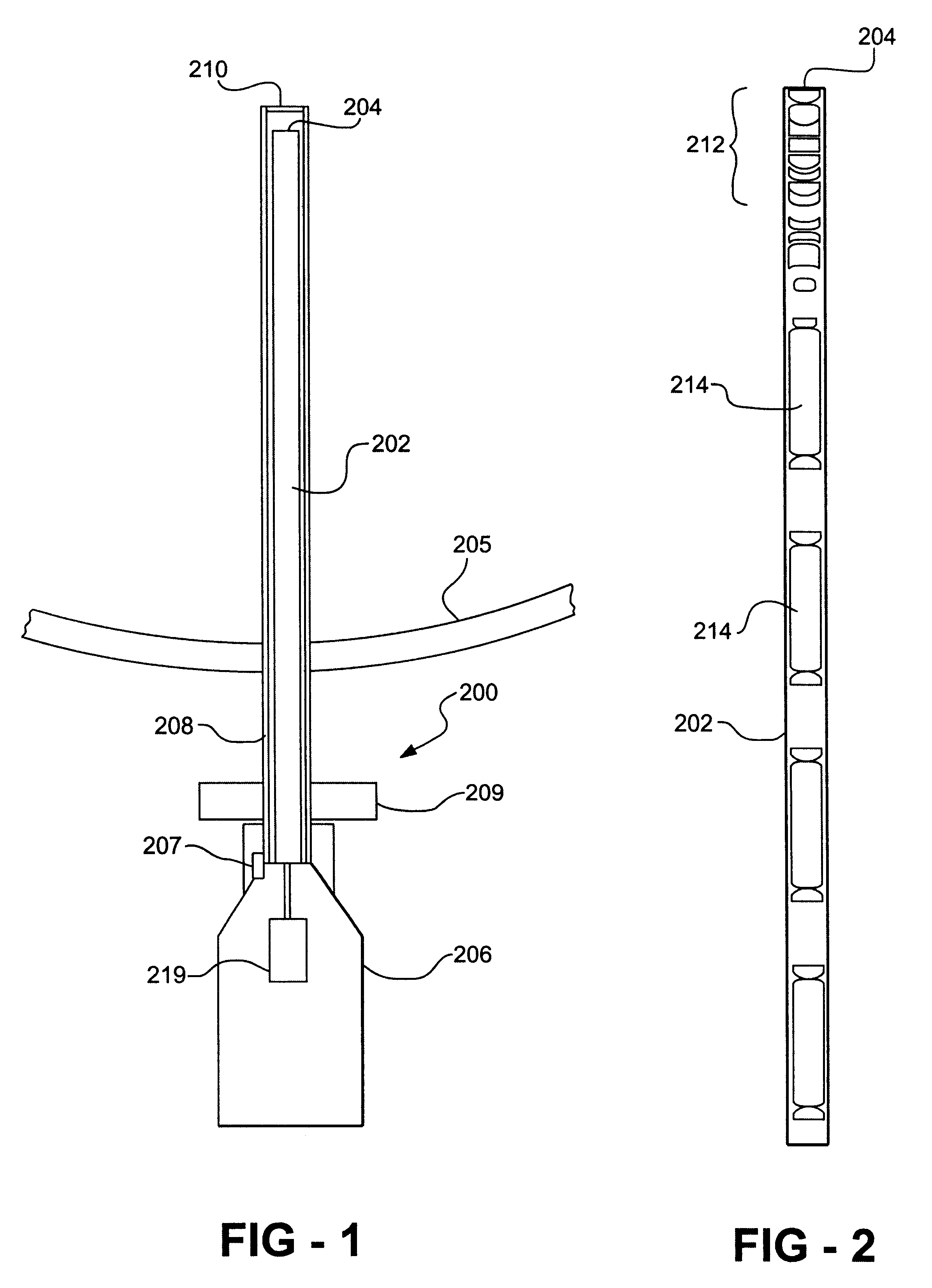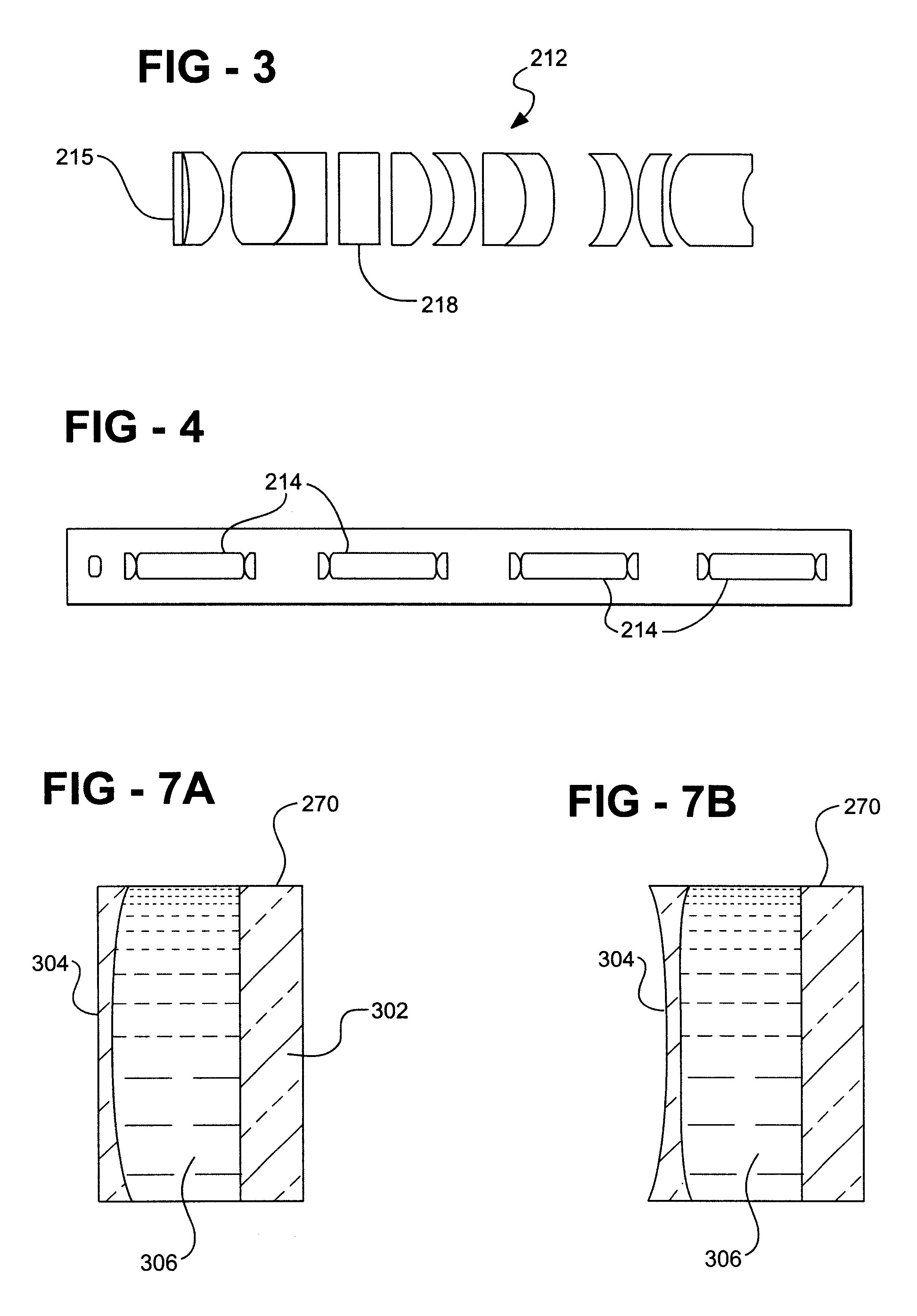Endoscope having microscopic and macroscopic magnification
a technology of endoscope and magnification, which is applied in the field of endoscope, can solve the problems of insufficient macroscopic magnification provided by the previously known endoscope, insufficient examination of the organ tissue in sufficient detail to determine, and unnecessary harm to the patient, so as to prevent unnecessary biopsies and/or organ removal, the effect of convenient sterilization
- Summary
- Abstract
- Description
- Claims
- Application Information
AI Technical Summary
Benefits of technology
Problems solved by technology
Method used
Image
Examples
Embodiment Construction
With reference first to FIG. 1, a preferred embodiment of the endoscope assembly 200 of the present invention is there shown. The endoscope 200 includes an elongated endoscope lens tube 202 having a free end 204 and an opposite end that is attached to a housing 206. The housing is designed to be manipulated by hand by the surgeon or other medical personnel, although it may alternatively be attached to a mechanical support or to a robotic arm. An elongated tubular stage 208 is dimensioned to be slidably received over the free end 204 of the lens tube 202 and is detachably secured to the housing 206 by a mechanical coupling 207, such as a bayonet coupling. The stage 208 has a transparent window 210 that is positioned over the free end 204 of the lens tube 202. The lens tube 202 together with the stage 208 is insertable into the patient 205 through a cannula while the housing 206 remains exterior of the patient.
With reference now to FIGS. 2-4, a plurality of optical lenses are disposed...
PUM
 Login to View More
Login to View More Abstract
Description
Claims
Application Information
 Login to View More
Login to View More - R&D
- Intellectual Property
- Life Sciences
- Materials
- Tech Scout
- Unparalleled Data Quality
- Higher Quality Content
- 60% Fewer Hallucinations
Browse by: Latest US Patents, China's latest patents, Technical Efficacy Thesaurus, Application Domain, Technology Topic, Popular Technical Reports.
© 2025 PatSnap. All rights reserved.Legal|Privacy policy|Modern Slavery Act Transparency Statement|Sitemap|About US| Contact US: help@patsnap.com



